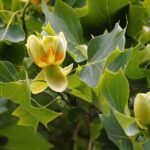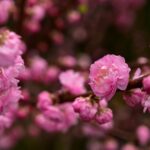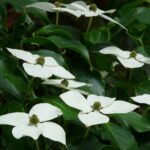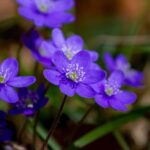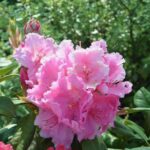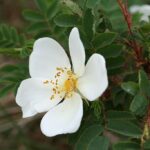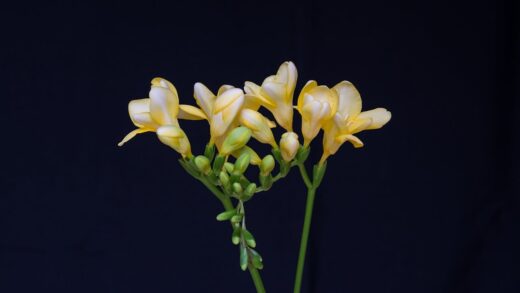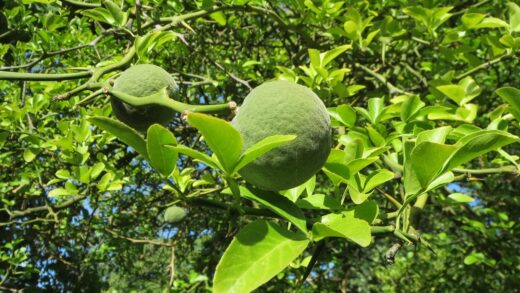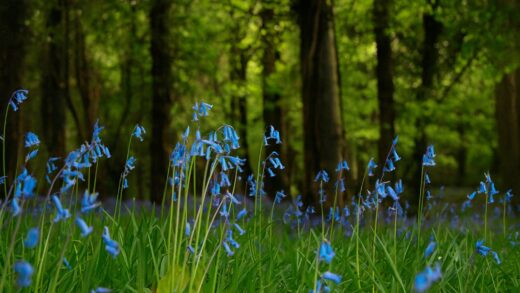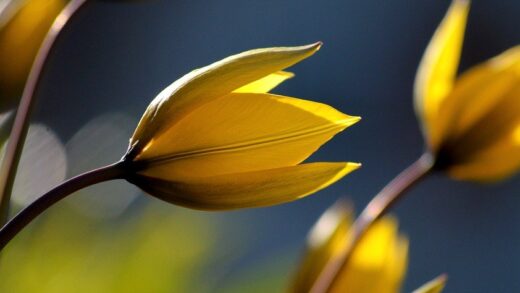One of the most remarkable characteristics of the Japanese banana is its ability to survive in temperate climates where freezing temperatures are a yearly occurrence. This survival is not an accident but the result of the plant’s natural life cycle and, more importantly, the gardener’s intervention to protect it through its most vulnerable period. The lush, tropical foliage is ephemeral, destined to be struck down by the first hard frost. The true secret to its perennial nature lies in protecting the underground corm, the resilient heart of the plant from which all new growth will spring forth. Mastering the art of winterization is the crucial final chapter in the plant’s annual cycle, ensuring its dramatic return the following spring.
Understanding dormancy in Musa basjoo
To properly prepare a Japanese banana for winter, it is essential to first understand the concept of dormancy as it applies to this plant. Musa basjoo is a herbaceous perennial, not a tree. This means that in climates with cold winters, the above-ground portion of the plant—the pseudostem and leaves—is not designed to survive freezing temperatures. The plant’s survival strategy is to allow this top growth to die back, while it concentrates all of its life-sustaining energy into its underground storage organ, the corm or rhizome. This corm is the key to its survival.
The process of entering dormancy is a gradual one, triggered by the environmental cues of decreasing daylight hours and falling temperatures in autumn. As these changes occur, the plant’s metabolic rate slows down dramatically. The production of new leaves ceases, and the transport of nutrients and water throughout the plant is greatly reduced. The plant effectively begins to shut down its above-ground operations and consolidate its resources below ground in the corm, which is packed with the stored energy needed to fuel the emergence of new growth the following spring.
The first hard frost of the season acts as the final, definitive signal for the plant to enter full dormancy. The frost will rupture the cells in the water-filled leaves, causing them to turn black and collapse. While this can be a dramatic and somewhat sad sight for the gardener who has enjoyed the lush foliage all summer, it is a perfectly normal and necessary part of the plant’s life cycle in a temperate climate. It is the plant’s way of shedding its vulnerable parts before the truly cold weather sets in.
Your role as the gardener is not to try and save the leaves or the pseudostem from the frost, but to work with the plant’s natural cycle. The entire goal of the winterization process is to provide an insulating layer of protection over the soil where the corm is resting. This insulation shields the corm from the deep, penetrating cold that could potentially freeze it solid and kill it. By protecting the corm, you are ensuring the survival of the plant’s genetic and energetic core, ready to re-sprout when warmth returns.
More articles on this topic
Preparing the plant for winter outdoors
The preparation for wintering your in-ground Japanese banana begins in the autumn, well before the first frost is expected. The most important step is to cease all fertilization by late summer or early autumn. Continuing to feed the plant, especially with high-nitrogen fertilizers, encourages the growth of soft, tender new foliage that is particularly susceptible to frost damage. You want the plant to naturally slow its growth and begin the process of hardening off in preparation for the coming cold.
You should also begin to gradually reduce the frequency of watering as the weather cools. The plant’s water requirements are much lower in the cooler temperatures and reduced light of autumn. Keeping the soil overly wet as the plant enters dormancy can increase the risk of the corm rotting over the winter. The soil should be allowed to dry out more between waterings than it would during the peak of summer. A slightly drier soil condition is preferable for the dormant corm.
The timing of the next step is dictated by the weather. You should wait until after the plant has been hit by the first hard frost. This event will kill the leaves, causing them to turn black and wilt. Once this has happened, it is time to cut the plant back. Using a sharp saw or a large pair of loppers, you should cut down the pseudostem, leaving a stump that is anywhere from 10 to 30 cm tall. While some gardeners prefer to leave a taller stump, a shorter one is often easier to cover and protect effectively.
After cutting back the pseudostem, it is crucial to clean up all the fallen leaves and other debris from around the base of the plant. This act of garden hygiene is important because the dead foliage can harbor fungal spores or provide a winter refuge for pests. Removing this material ensures that you are starting with a clean slate before you apply your winter protection, reducing the chances of disease problems emerging the following spring when the plant breaks dormancy.
More articles on this topic
The mulching method for in-ground plants
Once the Japanese banana has been cut back, the critical task of insulating the dormant corm begins. The most common and effective method for this is to apply a deep, thick layer of mulch over the stump and the surrounding soil. This mulch acts like a thick blanket, trapping the geothermal heat that naturally radiates from the earth and preventing the frost from penetrating deep into the ground and freezing the corm. The choice of mulching material and the depth of its application are key to success.
There are many excellent materials you can use for winter mulch. Dry leaves, straw, or hay are all effective and readily available options. You can create a simple cage out of chicken wire or hardware cloth, place it around the stump, and then fill the cage completely with your chosen insulating material. This keeps the mulch contained and prevents it from blowing away during winter storms. The cage should be wide enough to cover an area of at least 30-40 cm in diameter around the stump.
The depth of the mulch is critical. You are aiming for a very thick layer, ideally at least 30 to 50 cm deep. It is better to err on the side of too much mulch than too little. After filling your cage with the dry material, it is also a good idea to add a waterproof layer on top. A simple piece of plastic sheeting, a tarp, or even an inverted bucket or plastic storage tote placed over the top of the cage can help to shed winter rain and melting snow. This is important because a waterlogged, frozen mulch loses much of its insulating value and can promote rot.
This protective layer should be left in place throughout the coldest months of the year. You should resist the temptation to remove it during any brief warm spells in mid-winter. The real danger to the corm is a cycle of freezing and thawing. The mulch helps to keep the ground temperature stable. You should only begin to remove the mulch in the spring, after the date of your last expected hard frost has passed, to allow the sun to warm the soil and encourage the plant to break dormancy.
Overwintering container-grown specimens
Wintering a Japanese banana that is grown in a container offers a different set of options, as the plant is mobile. The most common method is to induce dormancy by moving the container into a cool, dark, and frost-free location. An unheated garage, a basement, a cellar, or a shed are all excellent choices. The goal is to find a place where the temperature will stay consistently above freezing but cool enough to keep the plant dormant, ideally between 2°C and 10°C.
Before moving the plant indoors, you should prepare it for its dormant period. You can either cut the pseudostem back to a stump, similar to how you would with an in-ground plant, or if you have the vertical space, you can leave it intact. Watering should be drastically reduced. Over the winter, you only need to provide a very small amount of water every four to six weeks. The goal is not to water the plant, but simply to prevent the soil and the corm from completely desiccating. The soil should feel dry to the touch for most of the winter.
An alternative for those with a suitable space, such as a heated greenhouse or a very bright sunroom, is to attempt to keep the plant growing actively through the winter. This is much more challenging, as you will need to provide it with very bright light, consistent warmth, and higher humidity than is typically found in a home during winter. The plant’s growth will likely be much slower than in the summer, and it will be more susceptible to indoor pests like spider mites, which thrive in warm, dry conditions.
When spring arrives, it is time to wake up your dormant, container-grown plant. You can move the pot back outside to a sheltered location once the danger of hard frost has passed. At this point, you can give it a thorough watering and, if you had previously cut it back, you can trim the stump down to healthy, firm tissue. As temperatures warm and you see the first signs of new growth, you can gradually move it back to its sunny summer location and resume your regular watering and feeding schedule.








